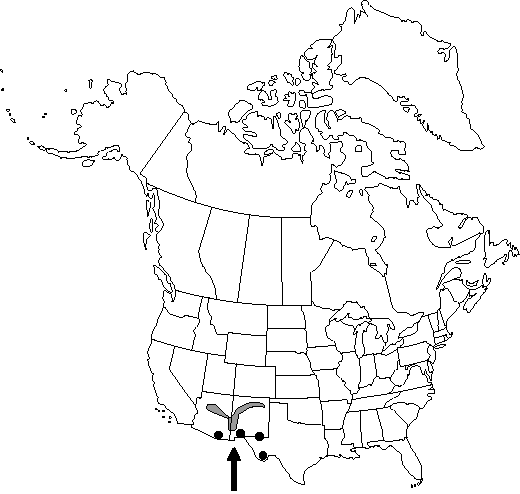Juniperus deppeana var. deppeana
Trees dioecious, to 10–15 (–30) m, single-stemmed; crown rounded. Bark brown, exfoliating in rectangular plates (rarely in thin strips in f. sperryi, but then branchlets flaccid), that of small branchlets (5–10 mm diam.) smooth, that of larger branchlets exfoliating in plates. Branches spreading to ascending; branchlets erect, rarely flaccid, 3–4-sided in cross-section, ca. 2/3 or less as wide as length of scalelike leaves. Leaves green, but sometimes appearing silvery when glaucous, abaxial gland ovate to elliptic, conspicuous, exudate absent, margins denticulate (at 20×); whip leaves 3–6 mm, not glaucous adaxially; scalelike leaves 1–2 mm, not overlapping, keeled, apex acute to mucronate, appressed. Seed-cones maturing in 2 years, of 2 distinct sizes, with straight to curved peduncle, globose, 8–15 mm, reddish tan to dark reddish-brown, glaucous, fibrous to obscurely woody, with (3–) 4–5 (–6) seeds. Seeds 6–9 mm.
Habitat: Rocky soils, slopes, and mountains
Elevation: 2000–2900 m
Distribution

Ariz., N.Mex., Tex., Mexico
Discussion
Although four additional varieties are found in Mexico, the relationships among the J. deppeana taxa are poorly understood and need additional study (R. P. Adams et al. 1984). The very rare J. deppeana Steudel var. deppeana forma sperryi (Correll) R. M. Adams (= J. deppeana Steudel var. sperryi Correll) is endemic to the Davis Mountains, Texas, where only two or three individuals are known to exist. This form is characterized by bark that exfoliates in thin strips and by flaccid branchlets.
Selected References
None.
Lower Taxa
"thick" is not a number.